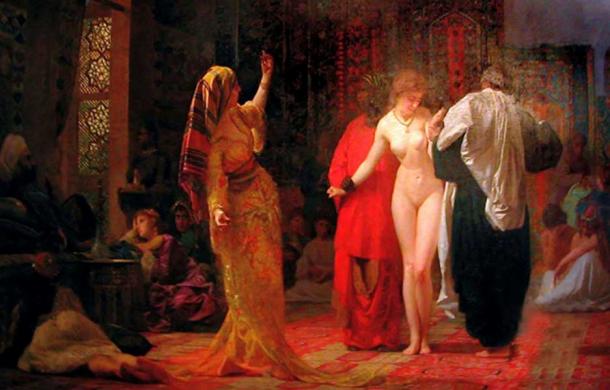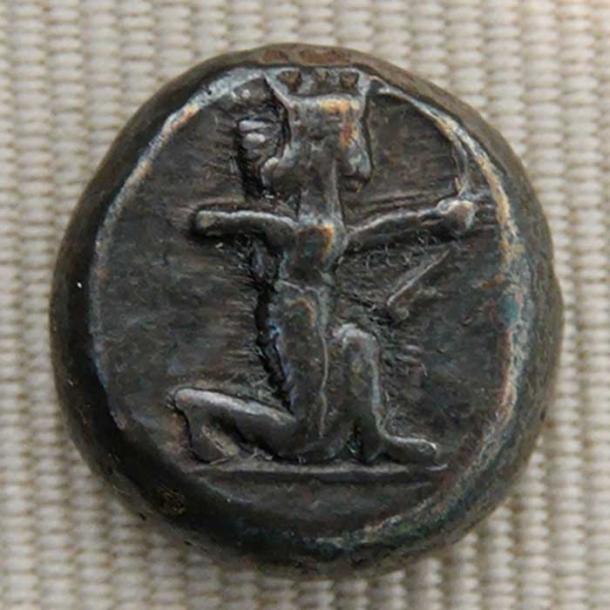Barter, Coins, Bills, and Banknotes
A long time ago, people did not buy or sell with money. Instead, they traded one thing for another to get what they wanted or needed. This exchange of goods or services is called barter. At the beginning this was sufficient, but with the evolution of societies, certain needs made the creation of a more stable and more efficient way of trading imperative. Many cultures around the world eventually developed the use of money whose value was based on the value of the material from which it was made. This type of money is known as “specie money” and its value is guaranteed by the precious metal it contains.

A white slave market (public domain). Slaves could be either bought or traded.
The first coins were originally manufactured from copper and then iron because these were strong materials used to make weapons. The monetary value of currencies was based on the value of the metal from which they were made. Coins were convenient because they could be counted rather than weighed. Coins were a trusted and efficient medium of exchange because they helped to significantly boost trade in the ancient world.
The first type of coin was used around 3000 BC in Mesopotamia and was called siglos or shekel. The shekel was an ancient unit of money and weight used to define both a specific weight of barley and equivalent amounts of materials such as bronze and copper. The great importance of formalizing the role of money in civil society was even mentioned in Hammurabi‘s law code created around 1760 BC. Mesopotamian civilization developed a large-scale economy based on commodity money. The Babylonians and their neighboring city states later developed the earliest system of economics as we think of it today, in terms of rules on debt, legal contracts, and law codes relating to business practices and private property.

Silver shekel issued by King Darius I of Persia ca. 500–490 BC, obverse: the king of Persia firing his bow. (CC by SA 2.5 / Jastrow)
In 700 BC the Greek king Pheidon of Argos was the first ruler known to have officially set standards of weight and money and to have coins made from a rather useless and decorative metal like silver rather than of iron. King Pheidon coined silver coins in Aegina, in the temple of the goddess of wisdom and war Athena Aphaia, and developed currencies with turtles on them. (Turtles are a symbol of capitalism today.) Turtle currencies were accepted and widely used as an international medium of exchange until the days of the Peloponnesian War when the Athenian drachma replaced them.
According to Herodotus, the first gold coins of the Grecian age were struck in Lydia, in Asia Minor, around 700 BC, under King Croesus, but it was not until 390 BC when King Philip II of Macedonia issued the first gold currencies. The Lydian coins were made of a weighed amount of precious metal and were stamped with the image of a lion.
The post Barter, Coins, Bills, and Banknotes appeared first on LewRockwell.
Leave a Reply